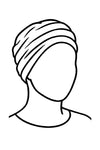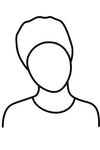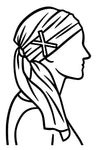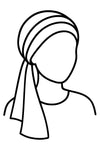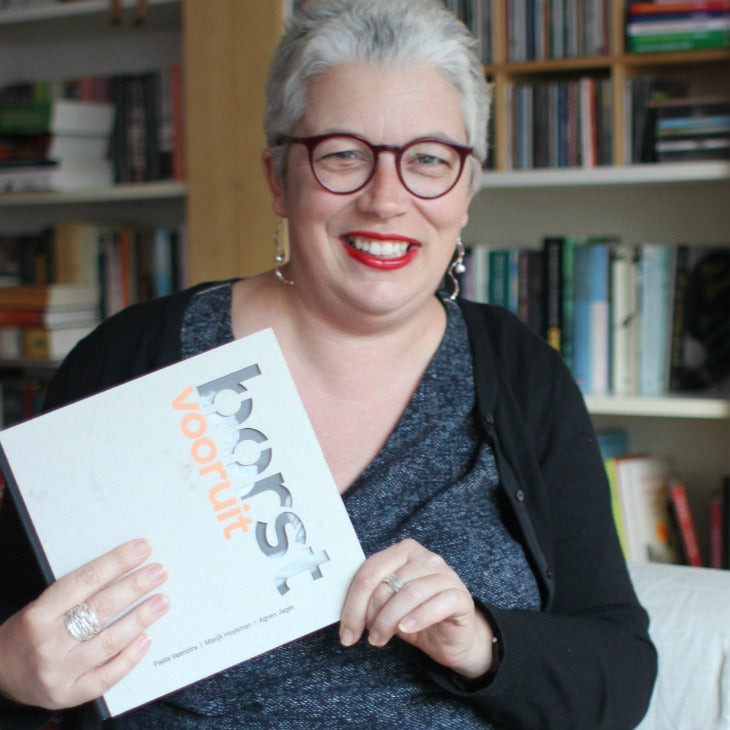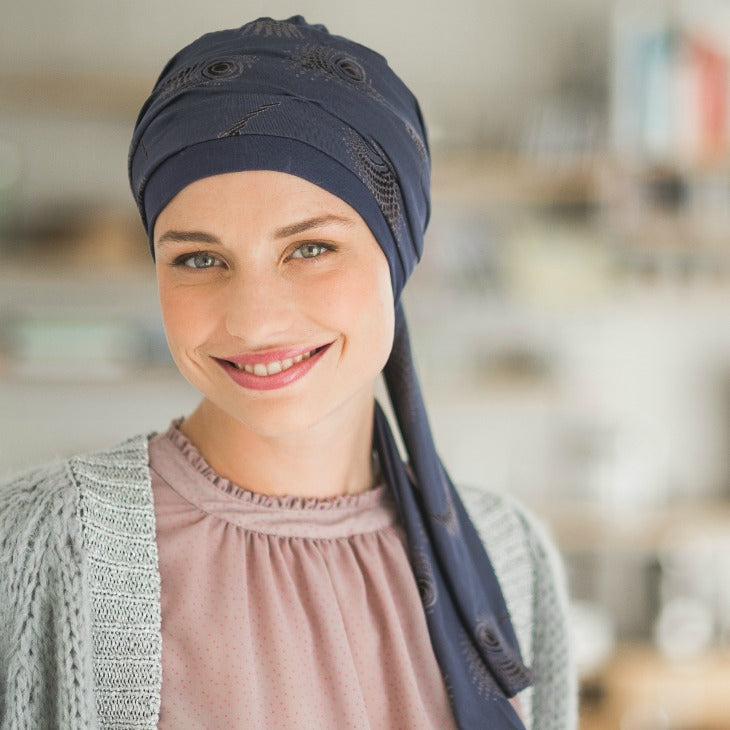The book Borst Vooruit (literally “Chest Forward” or “Breast Forward”) is a remarkable collection written by and for women with breast cancer. The Dutch title carries a double meaning: on the one hand, it refers to breasts (borst = breast), but at the same time “borst vooruit” is an expression meaning “stand tall, move forward with pride and strength.” The book gathers the voices of no fewer than 64 (former) patients. Complemented by expert advice, it aims to radiate strength and optimism. Did the makers succeed? We asked two fans of Rosette la Vedette: Judith and Maja.

Judith (left), from Antwerp, is 43 and has been treated for breast cancer. Maja (right), 32, from Eeklo, is currently undergoing immunotherapy as a melanoma patient. One reader with breast cancer and one without—a conscious choice. Because when we first picked up the book, we immediately felt it was about much more than just breast cancer. Many of the questions, fears, and insecurities are recognizable for people with other types of cancer too. What they share is the search for hope, knowledge, and strength. Curious about Judith and Maja’s impressions?
Judith and Maja, what was your first impression when you held the book in your hands?
Judith: “The book really invites you to read. The mix of testimonies, short tips, and beautiful photos is very appealing. I immediately started with one story and felt triggered to continue reading the next.”
Maja: “The way the cover was designed* is, to say the least, interesting. But it does spark curiosity. You want to pick it up and leaf through it.” (*The word “borst” is literally cut out of the cardboard-like cover.)
How do you rate the content?
Judith: “The book covers many aspects related to breast cancer: medical, physical, psychological, and social. Around each theme, women share their experiences and a number of tips are listed. Because of the variety of topics, I’d recommend not reading it all at once but selecting the parts that are most useful to you at that moment.
A real plus is the diversity of the women included, not only in terms of age but also ethnic background. This allows every woman to see herself reflected and brings many perspectives to the table. I found it very striking, for instance, how Islamic women approach illness: ‘According to Islam, illness is a blessing rather than a punishment or suffering. It is seen as cleansing the body and soul. A chance to reflect on who you are and what it means as a human being, for yourself and for others.’
Some of the advice is very short and could have been expanded, especially the practical chapters at the end (about nausea, exercise, weight, sleep issues, etc). Sometimes tips are also a bit ‘hidden’ in the testimonies. A few are specific to the Dutch healthcare system and not applicable everywhere (e.g. work reintegration). On the other hand, I do find it positive and credible that women themselves give the advice—it really enhanced the sense of solidarity and shared experience for me.”
Maja: “The book is divided into two clear sections: by women and for women. Each section is further broken down into smaller chapters. The women who speak stay true to the theme of their chapter. I gain courage from the first part, knowledge from the second. Every stage of treatment brings new questions. I feel this book can provide answers to those questions, or at least point you in the right direction.”
Which story stuck with you the most?
Judith: “There are many moving stories. The most powerful are the quotes and photos of Marijk, 57, a woman with metastatic breast cancer. She describes her emotions, her bond with her daughter, her expectations for the future, in such a strong way. Another striking story is that of Nazif, 38, a Turkish hairdresser with three small children, who fought her metastatic cancer with phenomenal strength.”
Maja: “Each testimony comes from exceptionally strong women. Each has her own story, but they all share the same resilience—refusing to give up, carrying their illness with as much dignity as possible. It’s the positivity in their words that motivates you. I was struck by women who said they weren’t angry, and I could relate to that. Charelli wrote, ‘who does good, meets good,’ and about the flipside if you hadn’t ‘done good,’ you got it back on your plate. Karma. That raises the question of whether you caused the illness yourself. A question I often asked myself. From that I learned not to be angry at cancer. I made it clear to myself that no one made me sick, and that now I am only faced with people doing everything they can to help me in their own way.”
Did you learn anything new from this book?
Judith: “I didn’t find very concrete new tips since I’ve just finished treatment. The advice is recognizable though, and the book covers so many aspects of the illness. What I take away is that every woman has her own story and her own emotions. There’s no single ideal way of coping. One woman likes to talk, another prefers distraction. Both are valid. It’s completely OK to feel what you feel, to keep working or not, to shave your head or not, etc.”
What impression did the book leave on you?
Judith: “A very warm, supportive feeling. I feel connected to the women whose emotions, fears, and strengths are so recognizable. The book provides support: the sense that you are not alone, that many others face the same challenges. Because many young mothers spoke, it was extra relatable for me.
Some women with metastatic cancer are included too. Their stories are often heartbreaking but show incredible courage and strength. As a breast cancer patient, it was frightening to read their stories—it gave me a Damocles’ sword feeling: will this happen to me too? But the prevailing message is the importance of positivity and hope, of trying to make the best of the situation. ‘A proud book, combative and strong. Borst vooruit!’ as the creators themselves wrote, sums it up perfectly.”
Maja: “As a melanoma patient rather than a breast cancer patient, I mainly noticed the similarities. The questions, the fears, dealing with family and friends, the ups and downs. I never compare my path directly with that of breast cancer patients. I often say I got off relatively lightly since I could avoid chemo and receive immunotherapy. But that’s mainly on a physical level. I often downplay my illness. Reading these stories, I noticed patients do that more often. For me it’s a way to avoid self-pity—something completely absent in this book.”
What do you think of the design, with its unusual cover and contemporary black-and-white photography?
Judith: “It looks beautiful. So many cancer brochures look depressing because of their title, colors, or dull layout. This book looks stunning with its combination of testimonies, large portraits, and framed tips. It’s also very easy to read. Small downside: the tips about ‘skin and beauty care’ don’t come across as clearly in black-and-white. For example, the eyebrow step-by-step section: a color photo or drawing would have made it much easier to apply.”
Maja: “What really stands out are the photos. The women’s expressions—they all radiate hope. The layout is clear, sober, and simple. And that’s all this subject needs, no frills.”
Would you recommend the book, and to whom?
Judith: “Definitely. I’d recommend it to women currently in treatment for breast cancer. The many testimonies are very recognizable and offer ways to cope. Especially the emotional aspects described foster a sense of solidarity and not being alone.
I’d also recommend it to the support network of breast cancer patients: family and friends (and more broadly, anyone supporting someone living with cancer). It’s not always easy to talk about the illness and emotions. This book provides great insight into the emotional side, both during and after treatment, and how to deal with it. It also includes tips for loved ones on how best to support someone. The importance of dialogue is clear: talk about what you need (as a patient) and dare to speak up (as a network). Even after treatment, someone with breast cancer goes through waves of emotions—especially then, it’s important to keep talking and paying attention.”
Maja: “I recommended it to the nurses on my ward. They deal with breast cancer patients every day. This book can be supportive emotionally, but also practically (in the second part). For caregivers, especially those at the start of their career, it offers valuable insight into the emotional challenges patients and families face.”
More about Borst Vooruit
The makers of Borst Vooruit are Paola Veenstra (oncology nurse), Marijk Huysman (sociologist and breast cancer patient), and Agnes Jager (internist-oncologist). All three are connected to the Dutch Academic Breast Cancer Center Erasmus MC-Havenziekenhuis in Rotterdam. Even with their expertise, they were often confronted with patient questions they couldn’t immediately answer. They realized those answers could best be found with the true experts: their patients.
They spoke with dozens of women about their uncertainties, work, children, loved ones, and lives. They knew a book had to be made. A book by and for women with breast cancer, supplemented here and there with expert advice, so that not every patient has to reinvent the wheel. Beautifully designed and photographed by Mirjam Letsch, it is a book that radiates strength and optimism, built on the experiences of 64 women, input from patient panels, group discussions, and interviews. A proud book, combative and strong. Borst Vooruit indeed!
And one more thing: the book Borst Vooruit was made possible by numerous sponsors and costs €14.95. All proceeds go directly to cancer research. More info at www.borstvooruit.nl.

